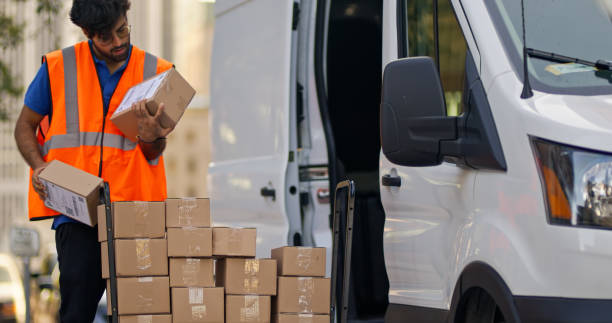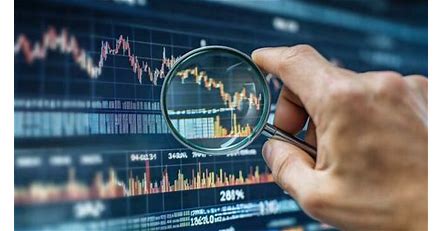Executive Summary
The last-mile logistics industry—responsible for the final leg of delivery from distribution centers to end consumers—has emerged as a critical and competitive component of the global supply chain. Driven by the explosive growth of e-commerce, consumer demand for fast and flexible delivery, and urban population density, last-mile logistics is now a $200+ billion global market. In 2025, the sector is undergoing transformation through automation, AI, electric vehicles (EVs), and alternative delivery models such as lockers, drones, and crowdsourcing. Yet, rising costs, environmental concerns, and labor shortages continue to challenge scalability and profitability.
1. Industry Overview
1.1 Market Size & Growth
• Global last-mile delivery market (2025): $212 billion
• CAGR (2020–2025): 9.3%
• Key sectors served: E-commerce, grocery, pharmaceuticals, food delivery, retail, B2B parcels
1.2 Key Players
• Global Integrators: FedEx, UPS, DHL, Amazon Logistics
• Gig/Crowdsourced Platforms: DoorDash, Uber, Instacart, Gopuff
• Retail/E-tail Entrants: Walmart, Target, JD Logistics, Alibaba Cainiao
• Tech & Automation Firms: Starship Technologies, Nuro, Zipline, Gatik
2. Key Trends in 2025
2.1 Ultra-Fast Delivery and Hyperlocal Fulfillment
• Consumer expectations have shifted to same-day or sub-hour delivery, especially in dense urban markets.
• Retailers are investing in micro-fulfillment centers (MFCs) within cities to shorten delivery times.
2.2 Electrification and Sustainability
• Regulatory and ESG pressures are pushing fleets to transition to electric vehicles (EVs).
• Urban delivery zones in Europe and Asia now often mandate zero-emission vehicles.
2.3 AI & Predictive Routing
• AI and machine learning tools are optimizing delivery route planning, traffic prediction, and dynamic re-routing.
• Predictive analytics is being used to anticipate demand surges and pre-position inventory.
2.4 Autonomous Delivery
• Autonomous vehicles, drones, and sidewalk bots are piloting in niche environments, such as campuses, gated communities, and hospitals.
• Regulatory adoption remains a hurdle, though Zipline, Nuro, and Starship have made progress.
2.5 Consolidated Delivery & Parcel Lockers
• To reduce costs and emissions, companies are adopting bundle delivery models, drop boxes, and smart locker networks (e.g., Amazon Lockers, InPost).
• Consumers increasingly opt for convenience pickup over home delivery for returns and security.
3. Industry Challenges
3.1 High Cost Per Delivery
• Last-mile accounts for 53% of total shipping cost in e-commerce logistics.
• High failed delivery rates, tight delivery windows, and low drop densities add to cost pressures.
3.2 Labor Shortages and Gig Worker Tensions
• Dependence on contract drivers raises issues around availability, turnover, and legal classification (employee vs. contractor).
• In 2024–25, several jurisdictions introduced new protections and minimum wage standards for gig workers.
3.3 Urban Congestion and Regulation
• Congestion pricing, curb access limits, and urban delivery zoning are reshaping urban logistics strategies.
• City partnerships with logistics providers (e.g., urban consolidation centers) are expanding.
3.4 Returns Management
• Reverse logistics—especially for fashion and electronics—remains costly and inefficient.
• Companies are deploying smart packaging, dynamic returns policies, and AI to reduce return volumes.
4. Innovations & Emerging Models
4.1 Crowdsourced Delivery
• Crowdsourced and gig models offer flexibility and scalability, especially for peak periods.
• Key challenge: quality control and brand consistency in customer experience.
4.2 Drones & Autonomous Vehicles
• Companies like Zipline (drones), Nuro (autonomous vans), and Starship (delivery robots) are testing new models.
• Best suited for rural areas, controlled environments, or light parcels.
4.3 Micro-Fulfillment & Dark Stores
• Retailers are creating dark stores (non-customer-facing) and micro warehouses to handle hyperlocal demand.
• Automation within these centers reduces picking time and accelerates delivery readiness.
4.4 AI-Powered Customer Communication
• Real-time tracking, automated SMS updates, and estimated arrival windows enhance delivery transparency.
• AI chatbots and IVR systems are managing last-mile customer service more efficiently.
5. Regional Snapshots
North America
• Dominated by Amazon Logistics, UPS, FedEx, and emerging gig players.
• Strong push toward EV adoption and labor reform in large cities.
Europe
• Urban regulation is more advanced (e.g., Low-Emission Zones), promoting cargo bikes, EVs, and lockers.
• Major investments in postal infrastructure modernization.
Asia-Pacific
• Leaders in super app delivery integration (e.g., Meituan, Grab).
• Rapid adoption of robotics and drone delivery, especially in China and Japan.
Latin America & Africa
• Infrastructure challenges remain, but mobile penetration enables creative last-mile workarounds.
• Growth in cash-on-delivery models and motorbike courier services.
6. Outlook and Opportunities (2025–2030)
Growth Drivers
• Rising global e-commerce penetration
• Smart city initiatives and urban logistics partnerships
• Retailer investment in own delivery networks
• Advances in AI, robotics, and EV charging infrastructure
Projected Trends
• Autonomous delivery will grow from pilots to partial deployment.
• Sustainability mandates will pressure fleets to be carbon-neutral.
• Subscription models (e.g., Amazon Prime, Walmart+) will lock in customers via free and fast delivery perks.
• Data integration across platforms will enable more efficient multi-vendor logistics ecosystems.
Conclusion
The last-mile logistics industry is navigating a high-growth yet high-cost environment, where innovation is the only path to scalability and sustainability. Companies that leverage automation, AI, and electrification—while adapting to urban policies and consumer expectations—will be best positioned to lead. The future of last-mile delivery lies in speed, flexibility, sustainability, and seamless customer experience.




